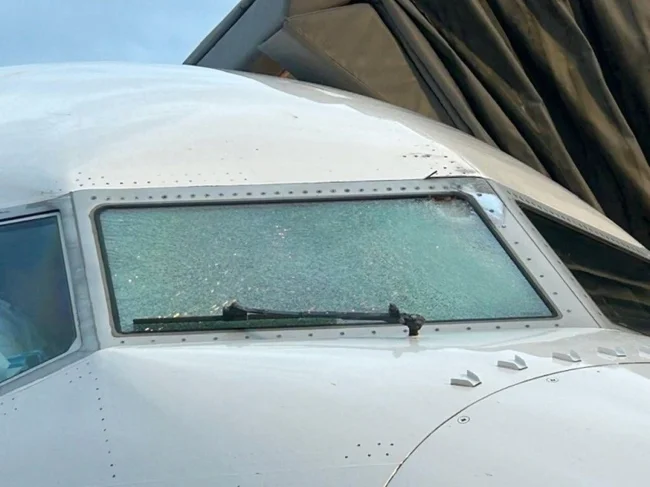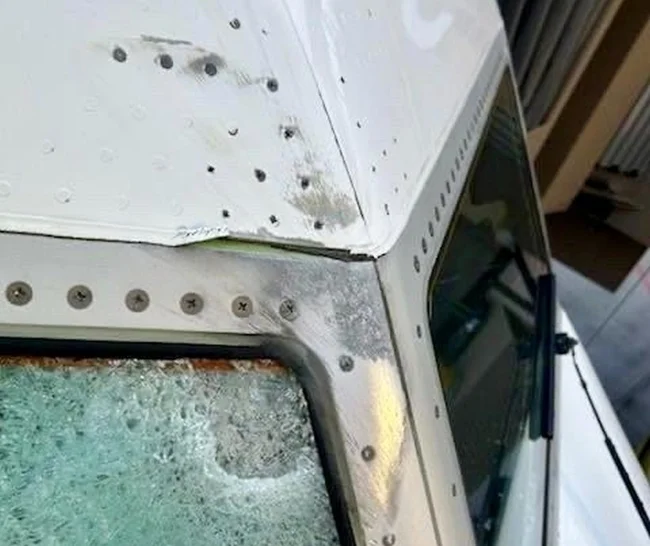Boeing 737 MAX aircraft collided with an unknown object at an altitude of 9,000 meters (2 photos)
The US National Transportation Safety Board reported an investigation into the collision of an airplane with an unidentified object that struck the windshield while flying over Utah. Images posted on social media show the right windshield of the Boeing 737 MAX, covered in a web of cracks and opaque. The captain described the object as "space junk." 
The incident occurred on October 16 during a United Airlines flight from Denver to Los Angeles. The origin of the object has not been determined. Images show the unidentified object impacting the upper portion of the right windshield, damaging the metal frame. Because the windows are made of multiple layers of high-strength glass laminated between them, the glass withstood the impact without breaking completely.
The plane was flying at an altitude of between 9,000 and 11,000 meters, and the cabin apparently remained pressurized. After the impact, the plane landed safely at Salt Lake City International Airport, diverting its route.
Without further information, it is impossible to determine the nature of the object. Very few bird species are capable of flying at such altitudes. The world's highest-flying bird, the Rüppell's vulture, is found primarily in Africa. On November 29, 1973, a Rüppell's vulture collided at an altitude of 11,300 meters with an airplane flying over Abidjan, Côte d'Ivoire, damaging one of its engines.
A collision with an uncontrolled weather balloon is possible, and large hail is also a potential cause. Experts believe the pilot's initial conclusion about space debris is less likely than a meteorite. About 17,000 meteorites fall to Earth each year. This is at least an order of magnitude more than the amount of man-made space debris that does not burn up upon re-entry into the Earth's atmosphere.
Nevertheless, space debris should not be completely discounted. In the past few years, humanity has launched so many satellites into space that the problem of orbital debris has become significantly worse. According to the European Space Agency (ESA), there are currently more than 6,600 tons of space debris in low-Earth orbit (between 160 and 2,000 kilometers).
"The NTSB is collecting radar, meteorological, and flight data recorders," the agency reported on social media. "The windshield has been sent to NTSB laboratories for analysis." A thorough analysis of the glass and metal damaged by the impact should help determine its origin. 

























